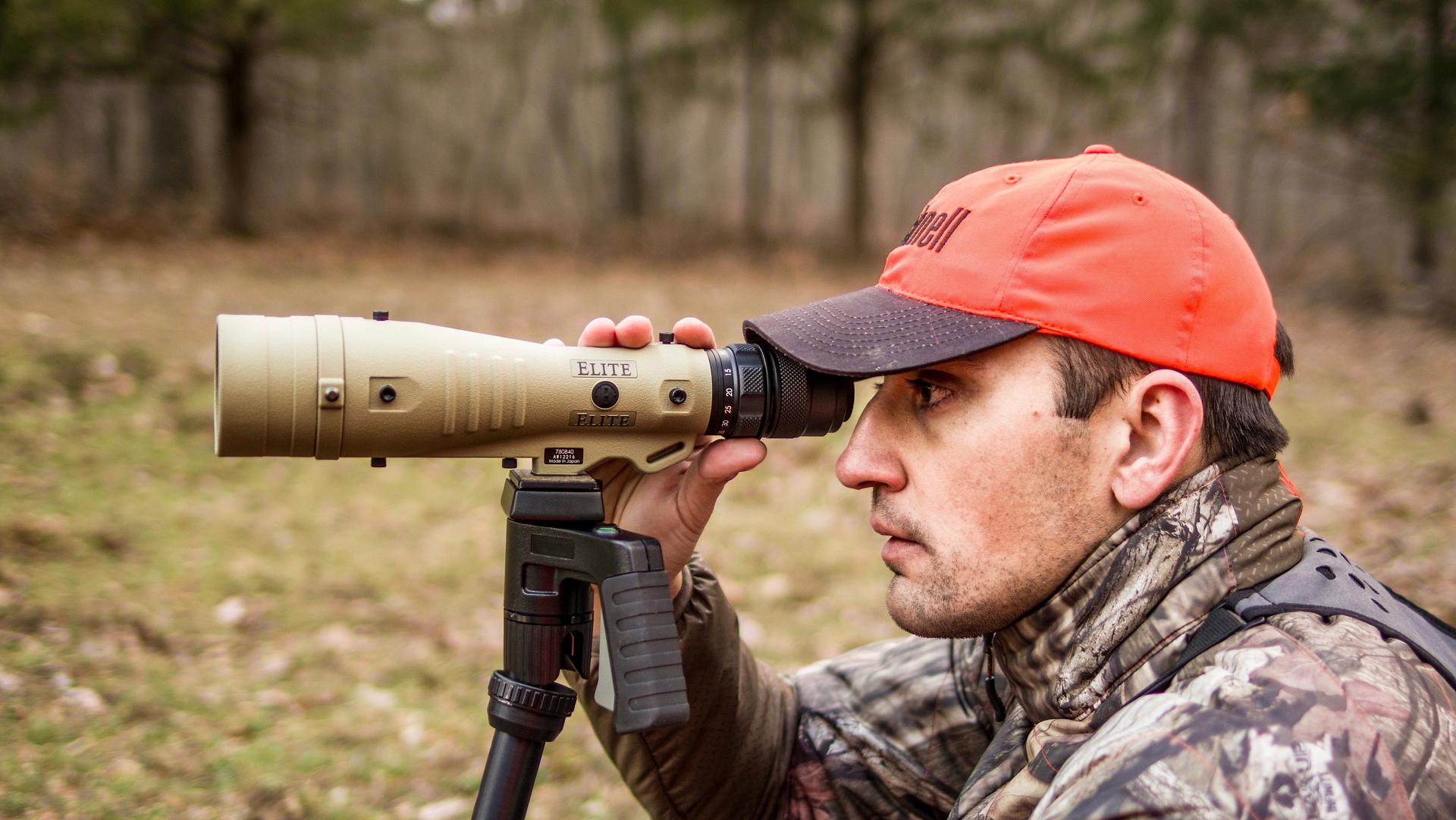Scope It Out
A Spotting Scope Is One of a Hunter's Most Effective and Versatile Tools—If You Get the Right One
Advertisement
If you don’t own a spotting scope, you’re missing out on one of the most effective and versatile tools a hunter can take afield. It’s equally at home in the mountains for locating sheep and elk in distant crevasses as it is in the open country for checking out whitetails, antelope and even waterfowl. When it comes to scouting, a spotting scope can save you time, energy and unnecessary wear on your boots. It also shines on the shooting range for checking bullet placement.
A spotting scope is a formidable magnifier, more powerful than binoculars but more compact than the astronomical telescopes from which it evolved. As with all optics, there’s a wide range of spotting scope styles, features and price points on the market. So, how do you decide which options are best suited to your needs? Start by considering how and where you plan to use your spotting scope.
Advertisement
If you’ll only be taking it the shooting range, you won’t need a model that’s waterproof or particularly durable. Weight won’t be a consideration either, and the magnification doesn’t need to be especially high. Planning instead to use it primarily from your vehicle to judge the trophy quality of deer, or perhaps identify where mallards are dropping into a field? Again weight, durability and weatherproofing aren’t important, but you’ll want a little greater magnification and higher-quality glass to optimize low-light performance. If you’ll be packing into the mountains, however, you’ll want a relatively lightweight, high-magnification spotting scope that can withstand the rigours of extreme weather.
The reality is that budget is often the greatest consideration, and that means trade-offs in quality or features must be considered. There’s optical quality to think about, which impacts how well the scope performs at great distances or in low light; this will be largely determined by the type of glass used and the lens coatings. The scope’s mechanical quality, on the other hand, will be determined by the materials used and the assembly process. In short, you generally get what you pay for in optics, so you should always buy the highest quality you can afford. Here’s what else you should consider.
Magnification
Magnification generally rages from a low of 12x up to 60x or more. When the weather and light are favourable, higher magnifications enable you to see objects in greater detail. While this may sound ideal, there are drawbacks. With increased magnification, the size of the light beam that reaches your eye—the so-called exit pupil—decreases, reducing the scope’s low-light performance. There’s also greater mirage effect, which distorts the image and can occur under many light, temperature and weather conditions, with increased magnification.
Advertisement
I’ve come to prefer variable magnification, rather than fixed, but find that 25x is plenty for most hunting scenarios. When conditions are perfect, 35x to 45x can be useful, but such extreme magnification is impractical in all but the highest-quality glass.
Objective Lens
The objective lens is the glass at the far end of the scope. Referred to by its diameter in millimetres, this lens has a significant impact on a scope’s ability to gather light—the larger the objective lens, the more light it can transmit, which translates to a larger exit pupil. But larger lenses usually mean additional weight and cost. Be pragmatic in assessing how you’ll use your scope, and base your selection accordingly.
Eyepiece
No scope can outperform its eyepiece, so the construction and finish of the eyepiece is critical, especially when it comes to interchangeable eyepieces. Removable eyepieces that enable you to change magnification range can be advantageous, but such a feature tends to compromise waterproofing, and it costs extra.
You can choose between either a straight or an angled eyepiece. Angled eyepieces are more comfortable for extended viewing sessions, especially from a sitting position. If quick target acquisition is key, however, straight eyepieces are best. The same applies if the scope is used at eye level, as with when on the range or from a vehicle. Straight eyepieces also pack a little easier.
Tripods
Spotting scopes perform best only when they’re steady. Consider where and how you’ll use your scope and select an appropriate tripod. For the range, you may want a full-length tripod that allows you to stand. For a windy mountainside, however, a short but sturdy tripod is best. And if your scope will see a lot of use from the vehicle, a window mount is the answer.

